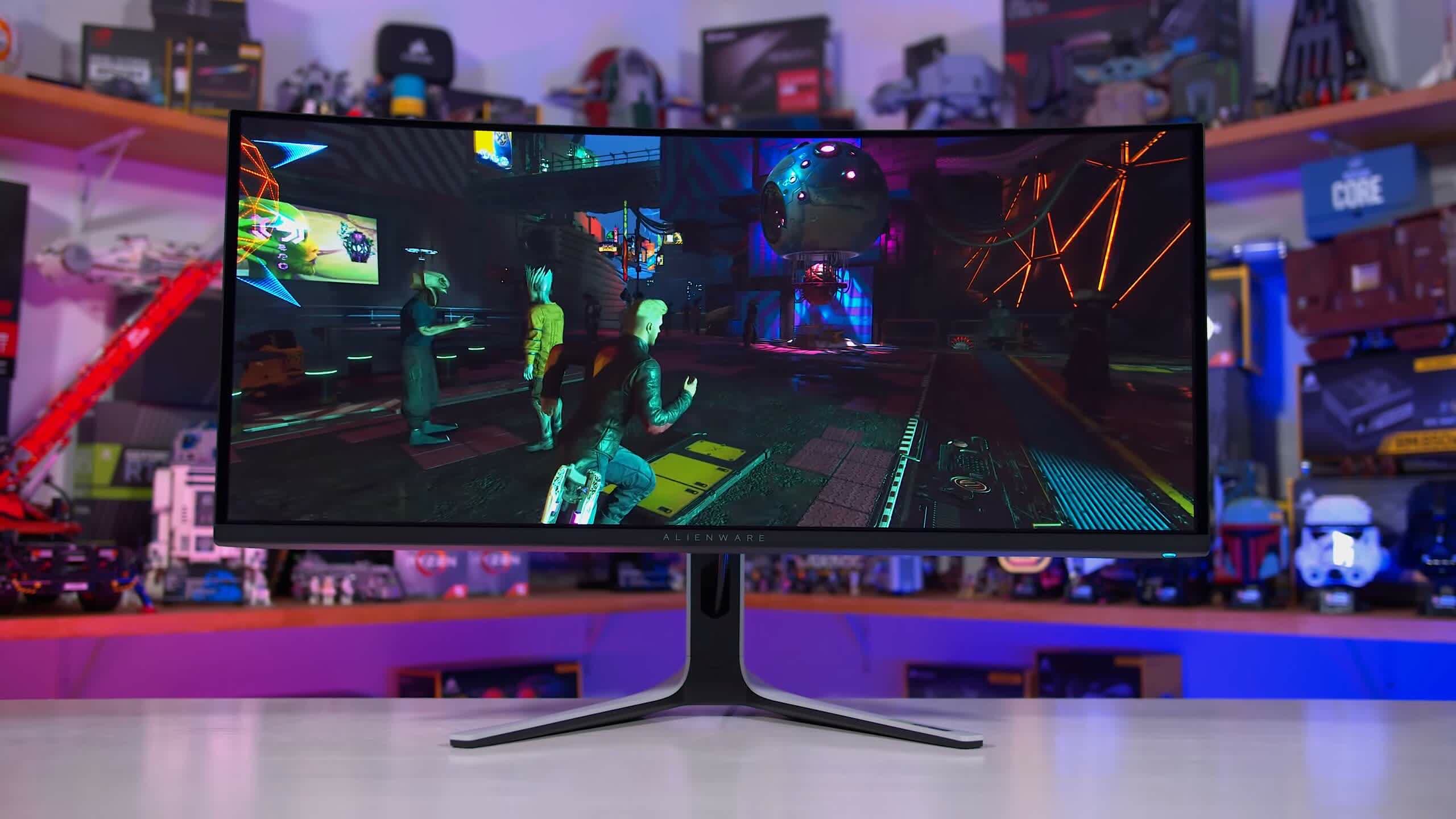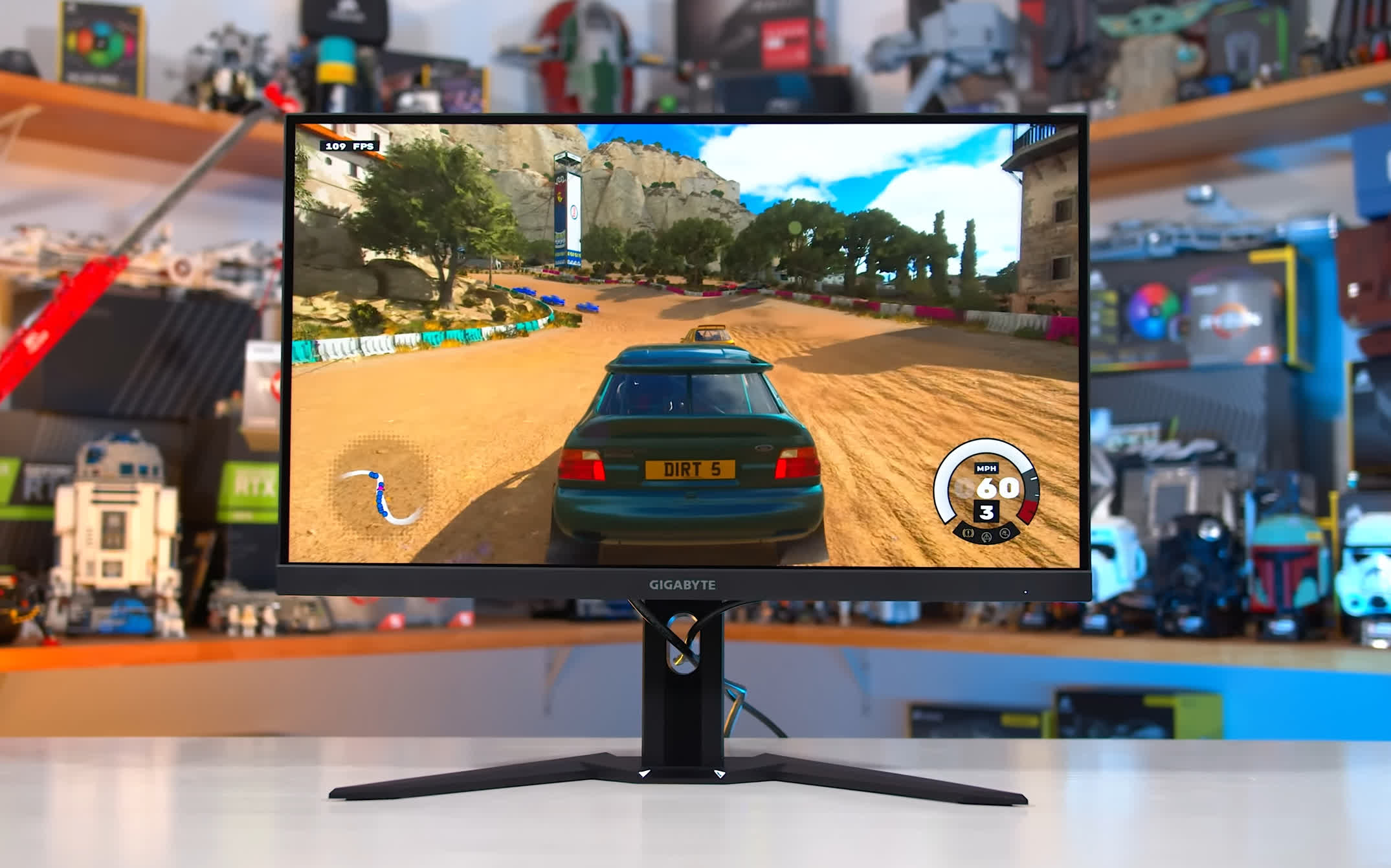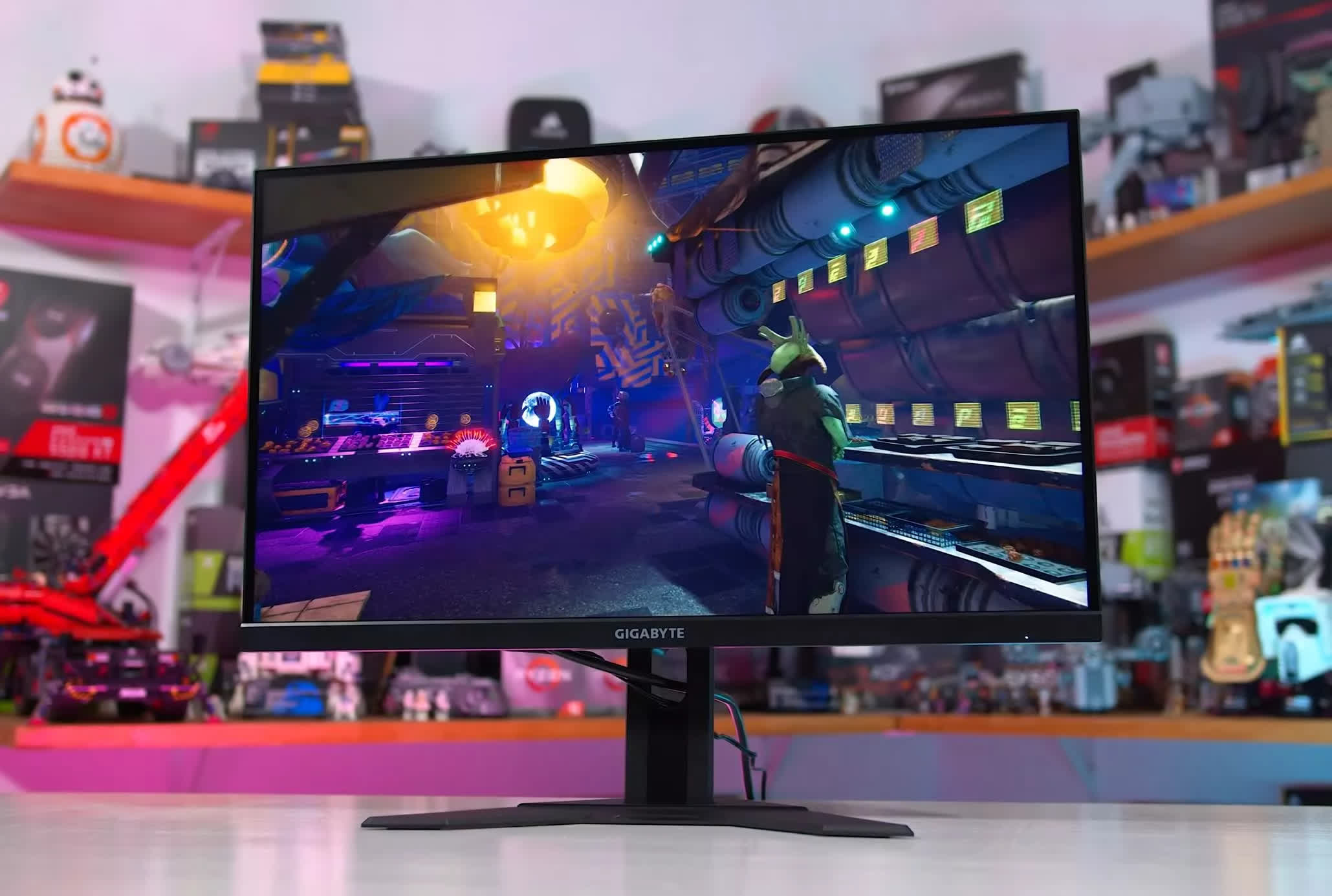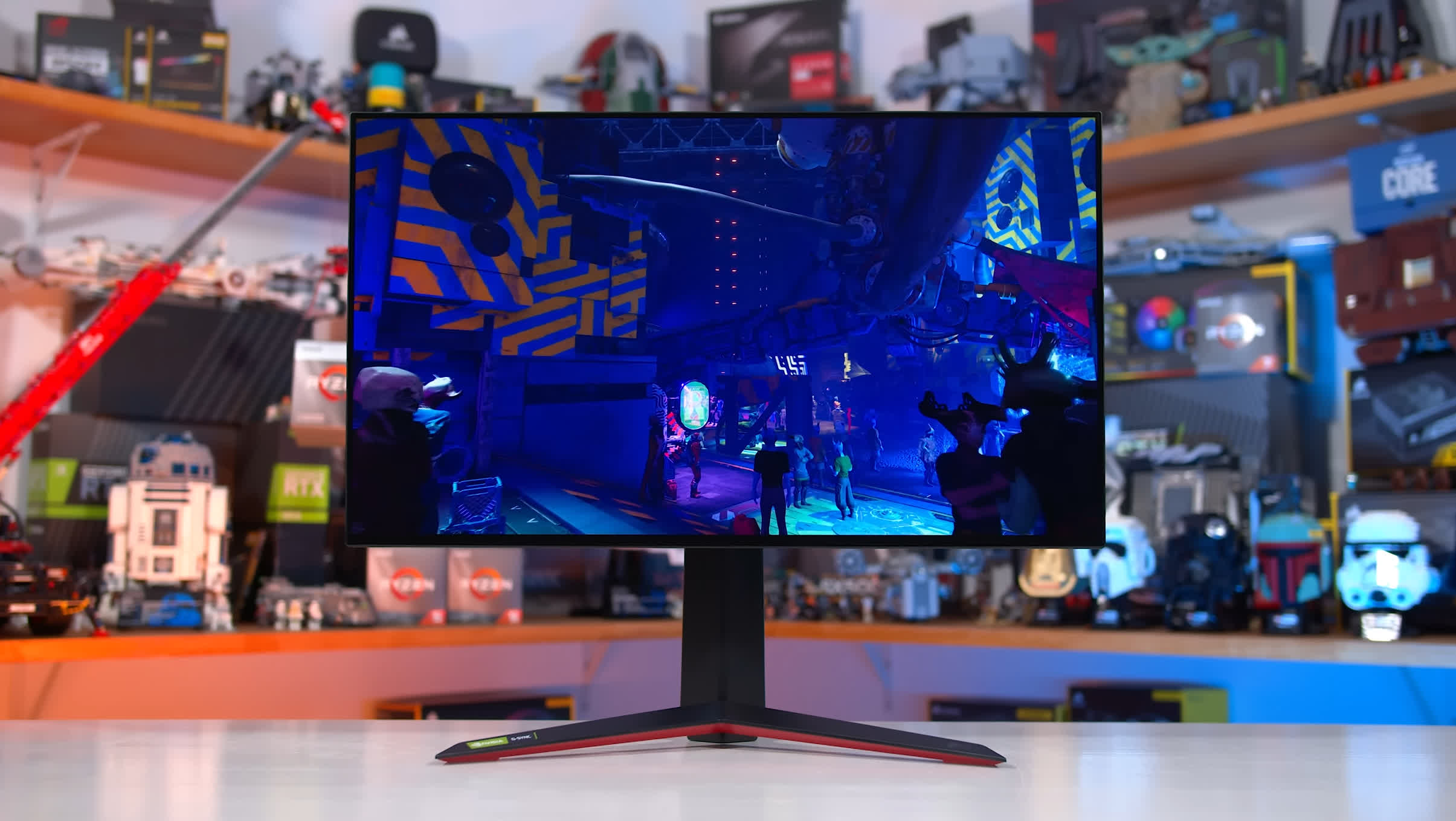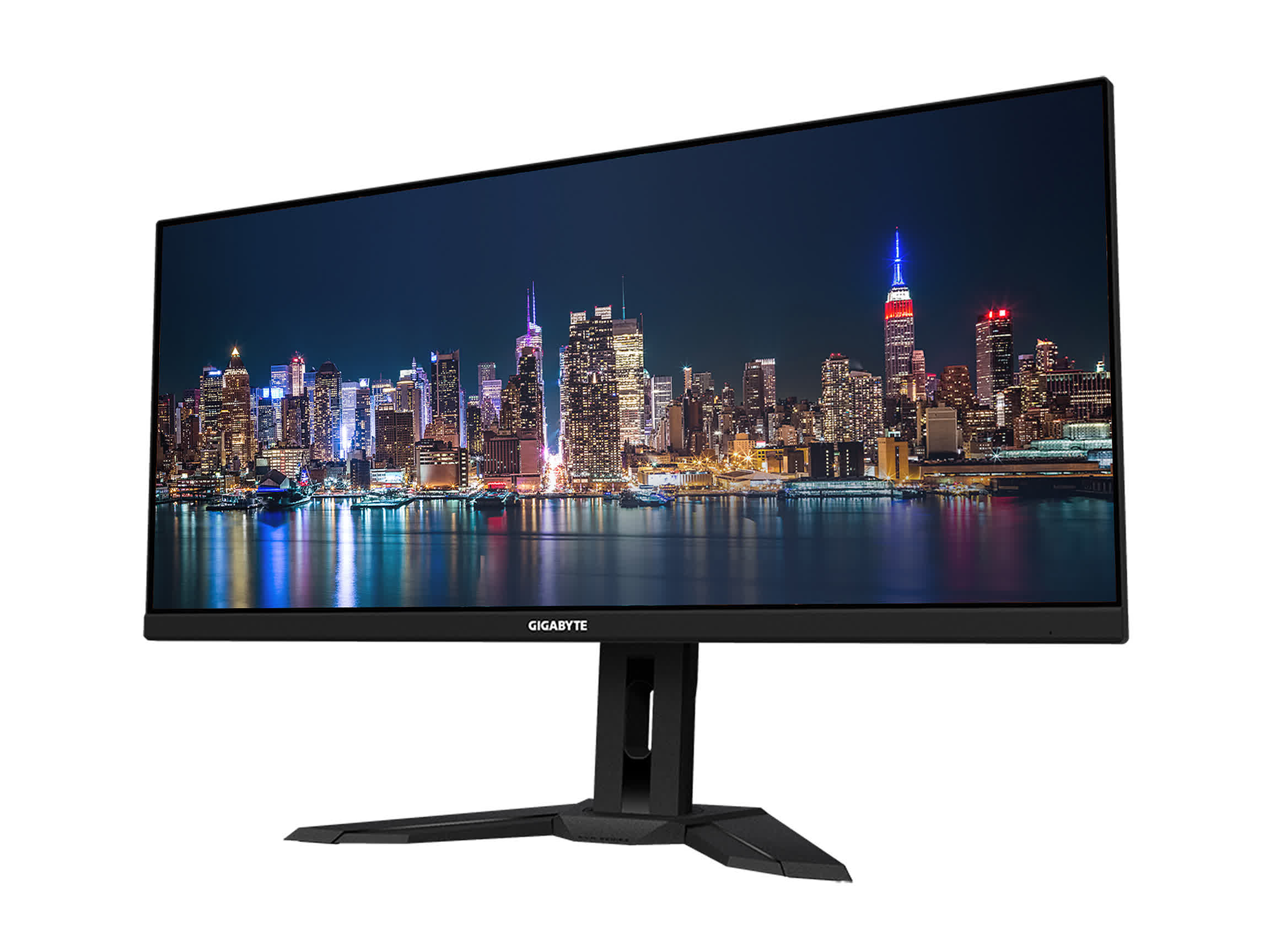See our latest update to this buying guide: The Best Gaming Monitors
Our picks for the best gaming monitors come after testing and reviewing a ton of different units. In this guide, we're going to go through everything we've learned so far and all the latest models tested to give you comprehensive advice on gaming monitor shopping in distinct categories including 1440p, 4K, ultrawide and HDR gaming monitors.
As discussed before, we tend to discuss and recommend only the monitors we've tested and know to be good, or monitors that are very similar to products we have tested (use the same panels). It's always worth going back and checking out the dedicated monitor reviews we produce for more in-depth thoughts on each, but most importantly the recommendations below are the byproduct of our testing results and research.
We've grouped monitors in five main categories: 1440p, 4K, ultrawide, HDR and 1080p, with a few key recommendations on each, depending on the level of refresh rate you are targeting, display size and budget. While pricing is accurate when we're putting this guide together, we are expecting many sales and various discounts throughout the next month.
- Best 1440p Budget
- Best 1440p Value
- Best 1440p Overall
- Best 4K 27-inch
- Best 4K 32-inch
- Best HDR Gaming
- Best Ultrawide
- Best Value 1080p
- Best 1080p Esports
More Buying Guides:
Best Budget 1440p Gaming Monitor
Gigabyte M27Q Pro

What's been a positive trend throughout the past 18 months is the price reductions for every type of 1440p monitor. It's never been more affordable to buy a 1440p gaming display, and there are tons of choices across many different categories, which is why we've broken them down.
It's an extremely competitive market for 1440p medium refresh monitors, with excellent value deals. If you're on a budget for your gaming setup, this is where we'd be looking. You'll want to pay around $250 for a 27-inch 1440p 165Hz monitor.
Our favorite choice at $250 is the Gigabyte M27Q-P (also called the M27Q-Pro). This is a 27-inch 1440p IPS display with a maximum refresh of 170Hz, and offers the best performance in this price range of any monitor we've tested. It's also a good improvement on the original M27Q that we've recommended many times before, at a lower price.
The M27Q P is a fast monitor, offering great response time performance in the budget class. It's not the absolute fastest IPS we've tested, but it's certainly decent and delivers low overshoot. Gigabyte also offers a great color experience making the M27Q-P a well balanced product: it's got 98% DCI-P3 coverage and a well tuned sRGB mode, plus handy features like a KVM switch and low input lag. The main weakness is the contrast ratio which is nothing special as is typical of an IPS monitor.
We'd pick this over the HP X27q which is available for as little as $220. For just $30 more you get a wider color gamut, better calibration, higher brightness and contrast, plus more features and similar response times. We think it's worth the extra cash.
Another alternative is the Nixeus NX-EDG27X which is a 27-inch 1440p 165Hz IPS monitor also currently available at $250. This option uses a different panel with a higher contrast ratio and slightly faster, more tunable response times. However factory calibration is much worse, so you'll need to be specifically after a benefit like its contrast or response times to make it a worthwhile choice over the Gigabyte option.
Best Value 1440p Gaming Monitor
MSI MAG274QRF | Corsair 32QH165 | Gigabyte M32Q

The MSI Optix MAG274QRF-QD is our recommendation for 1440p value at just $350, and it's better than the M27Q-P in most areas. Much wider color gamut including decent Adobe RGB coverage, faster response times and a better variable refresh experience.
Also of interest might be upgrading to a 32-inch panel size, in which case we'd be looking at the Corsair Xeneon 32QH165 for $350, or the Gigabyte M32Q for $330. These monitors are similar, both 32-inch 1440p IPS options, the Corsair at 165Hz and the Gigabyte at 170Hz. If you're more interested in wide gamut performance and color quality, we'd choose the Corsair, and if motion performance is more your thing at a slightly cheaper price, we'd get the Gigabyte.
A Faster Option
When opting for a 240Hz 1440p monitor, there's a clear standout option right now which is the Gigabyte M27Q-X. Other similar products will typically set you back at least $500, while the M27Q-X is priced at just $400, which is extremely competitive for its specifications.
It features a 27-inch 1440p 240Hz IPS panel and while it's no standout in any area of performance, it delivers a well balanced experience at an unbeatable price point.
Decent colors including a good sRGB mode, it's nice and fast at both 240Hz and lower refresh rates, and you get typical benefits of IPS like wide viewing angles. It's surprisingly well rounded with no obvious major flaws despite its class leading price.
Best Overall 1440p Gaming Monitor
Asus PG27AQN | Samsung Odyssey G7 | Asus PG279QM

If you're after the ultimate 1440p experience, the Asus ROG Swift PG27AQN is the best of the best you can get at this resolution for gaming. It's the first 1440p 360Hz monitor, doing so with a 27-inch IPS panel. It offers excellent performance including class-leading response times for an IPS LCD and any 1440p monitor for that matter – extremely good motion clarity and input lag thanks to its stunning 360Hz refresh rate, and it's well calibrated at the factory delivering accurate colors.
From a performance standpoint there aren't many products offering better than the PG27AQN.
The main downside is the price, which is why we can't recommend it for everyone. At $1050, it's overly expensive sitting next to the Gigabyte M27Q-X which offers a 240Hz refresh at $400. Having to spend over $600 to go from 240Hz to 360Hz does sting, though for buyers with deep pockets it could be well worth it, especially for serious competitive gaming.
Other Top 1440p Choices
For about half the price and as an upgrade pick from Best Value 1440p monitors, for $500 you can check out the Samsung Odyssey G7. It's a 27" 1440p 240Hz monitor, but swaps the flat IPS for a curved VA – not for everyone, but it does have its benefits.

The Odyssey G7 has a much higher contrast ratio delivering deeper, richer blacks; and it's also a step above in motion performance thanks to faster response times and excellent tuning. It's not as versatile and makes a name for itself as a gaming-first display, but it's one to consider.
Also worth looking at is the Asus ROG Swift PG279QM which is the best overall 1440p 240Hz display, improving upon performance in basically every way. However, at $750, it's very expensive compared to the M27Q-X. We don't think spending the extra $350 is worth it, although it's a premium product which we guess means premium price.
Best 27-inch 4K Gaming Monitor
4 Options: Gigabyte | MSI | Asus | Samsung

Gaming monitors at 4K have quickly gone from niche to something that you should seriously consider as your next display. High refresh rate 4K gaming is now a reality, and while 4K monitors are not as affordable as 1440p, there are some excellent options to choose from.
Right now there are four great options around 27" 4K: the Gigabyte M28U at $530, the MSI Optix MAG281URF and Asus TUF Gaming VG28UQL1A at $550, and the Samsung Odyssey G7 S28 at $580. All four use the same Innolux panel, so the basics to performance are very similar. Especially when it comes to response times and tuning, you can expect to get the same level of motion clarity – all bring around a 5ms average with great overdrive tuning at up to 144Hz on its 28-inch 4K IPS panel.
The Gigabyte M28U is the cheapest of the four at $530, but we've seen it as low as $460. However it's not as simple as that, as the M28U has limited bandwidth HDMI 2.1 ports. That's fine for PC users, but if you're planning on using this display with a PlayStation 5, we'd recommend one of the other options at a similar price. On the other hand, the M28U has the best factory calibration and the best sRGB mode, so it's ideal for those that don't care much about HDMI 2.1.
If HDMI 2.1 bandwidth is important to you, then check out the other three. It's difficult to separate these products, so it might come down to how they look, or features like a KVM switch, which the MSI model has but the Asus does not.
As an upgrade choice, consider the LG 27GP950 which is available for $700. It's not substantially better than the 28-inch models we've been talking about, but it is a better and more capable monitor in some areas.
It's a 27-inch 4K 160Hz IPS monitor, so it bumps up refresh rate slightly, though motion performance is similar and delivers response times in the same ballpark. The main reason to go with the LG GP950 is more in the color performance side of things: it gets much brighter, has a higher contrast ratio and full 98% DCI-P3 color space coverage.
Best 32-inch 4K Gaming Monitor
Gigabyte M32U
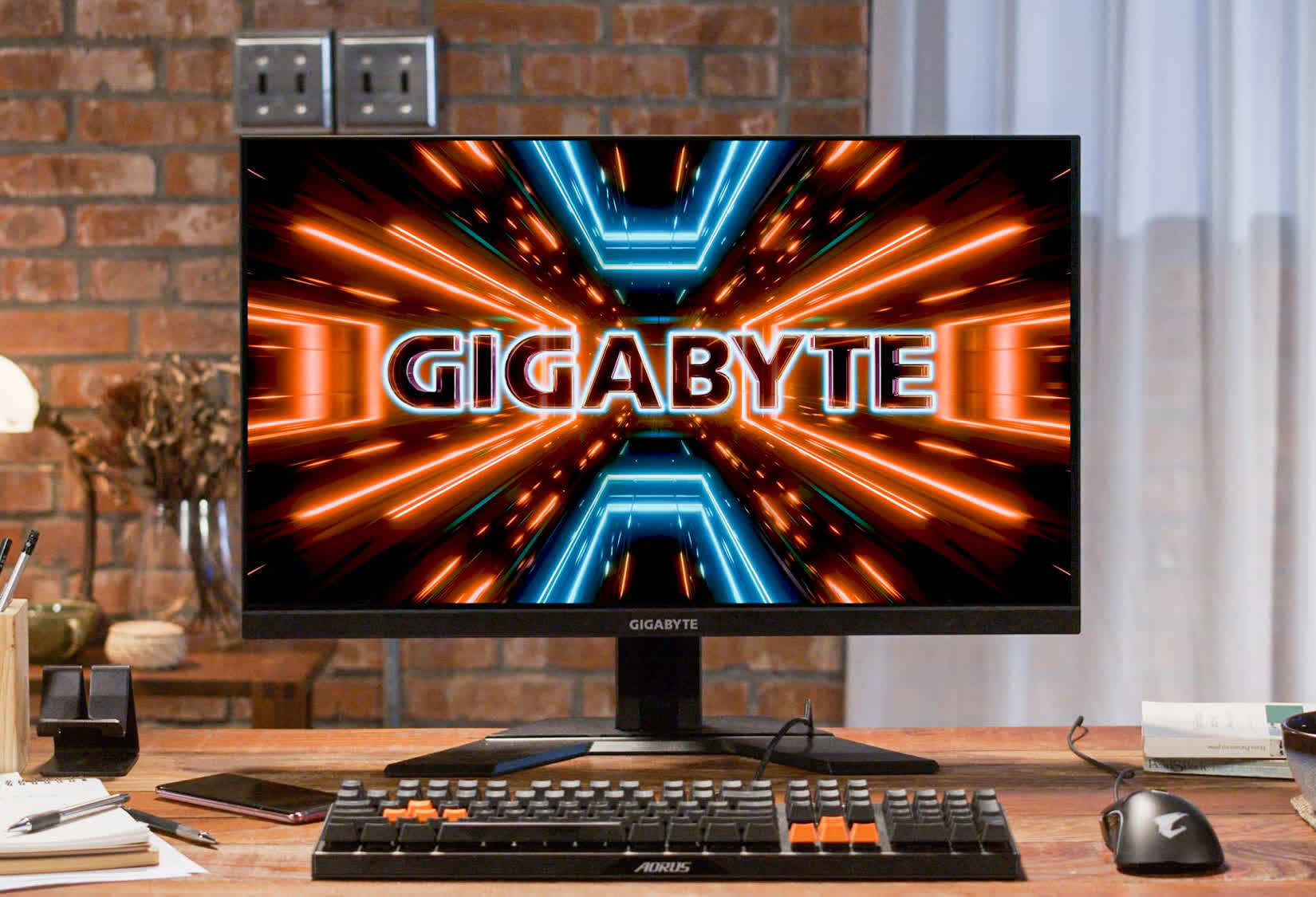
When going 4K you may also want to consider a larger display size, as 4K still looks excellent at 32 inches. Generally you'll be spending at least $100 more to upgrade in size. In this category we recommend the Gigabyte M32U which offers excellent value at $650.
The Gigabyte M32U is similar to the Aorus FI32U that we tested and it offers great performance for a 32-inch 4K gaming monitor. It's well balanced between color performance and motion performance without excelling in either area, although we think you'll be satisfied with what it brings. More expensive monitors like the MSI Optix MPG321UR-QD offer a wider color gamut at a higher price tag, closer to $800, but for the majority of gamers we think the M32U is a great choice for $650 (or $550 with an arm mount).
For the ultimate 4K monitor, the best of the best, for this we think we need to start looking at HDR options where several choices are available. Adding HDR into the mix – real HDR that is – typically comes at a several hundred dollar premium, but in some cases that is definitely worth it for the visual upgrade it brings, especially if you're after the best.
See the other sections below for more detail, but for now we'll say the two best options right now for 4K buyers looking for a premium monitor are the Samsung Odyssey Neo G7 and the LG C2 42-inch OLED. These are very different products of course, but offer true HDR hardware and are great buys depending on what you're after.
Best HDR Gaming
LG C2 | Alienware AW3423DW | Samsung Neo G7

There's good news to share in the HDR section because at long last there are a number of solid HDR monitor options to recommend. These will come at a premium – if you want proper, true HDR performance you'll need to be willing to part with at least $800 – but at the same time, real HDR monitors have never been more affordable, so we can finally recommend jumping in to this ecosystem.
At the moment there are three good options: the Alienware AW3423DW, the LG C2 OLED in a 42-inch size, and the Samsung Odyssey Neo G7. If we had to pick one as the best, we're torn between the Alienware or the LG C2 both of which are OLED displays. The Samsung Odyssey Neo G7 with its 1,196-zone VA LCD panel would comfortably place in 3rd, the motion clarity isn't as good, the HDR experience is good but not as good as the OLEDs, and while brightness is better, it's let down by Samsung's weaker color accuracy, bad viewing angles and less solid HDR optimization. However it's also the most affordable of the three at $800 which is a very reasonable price.
The reason to keep the Neo G7 recommendation is that it's the most standard, desktop friendly monitor. If you don't want the enormity of the LG C2 or the ultrawide nature of the AW3423DW, then the Neo G7 is a great choice, provided you can tolerate the 1000R curvature. It has the best text clarity and is perhaps the most suited to more normal desktop use. And while it may not be as good as the OLEDs in some areas, it still offers solid performance in many areas for an LCD.
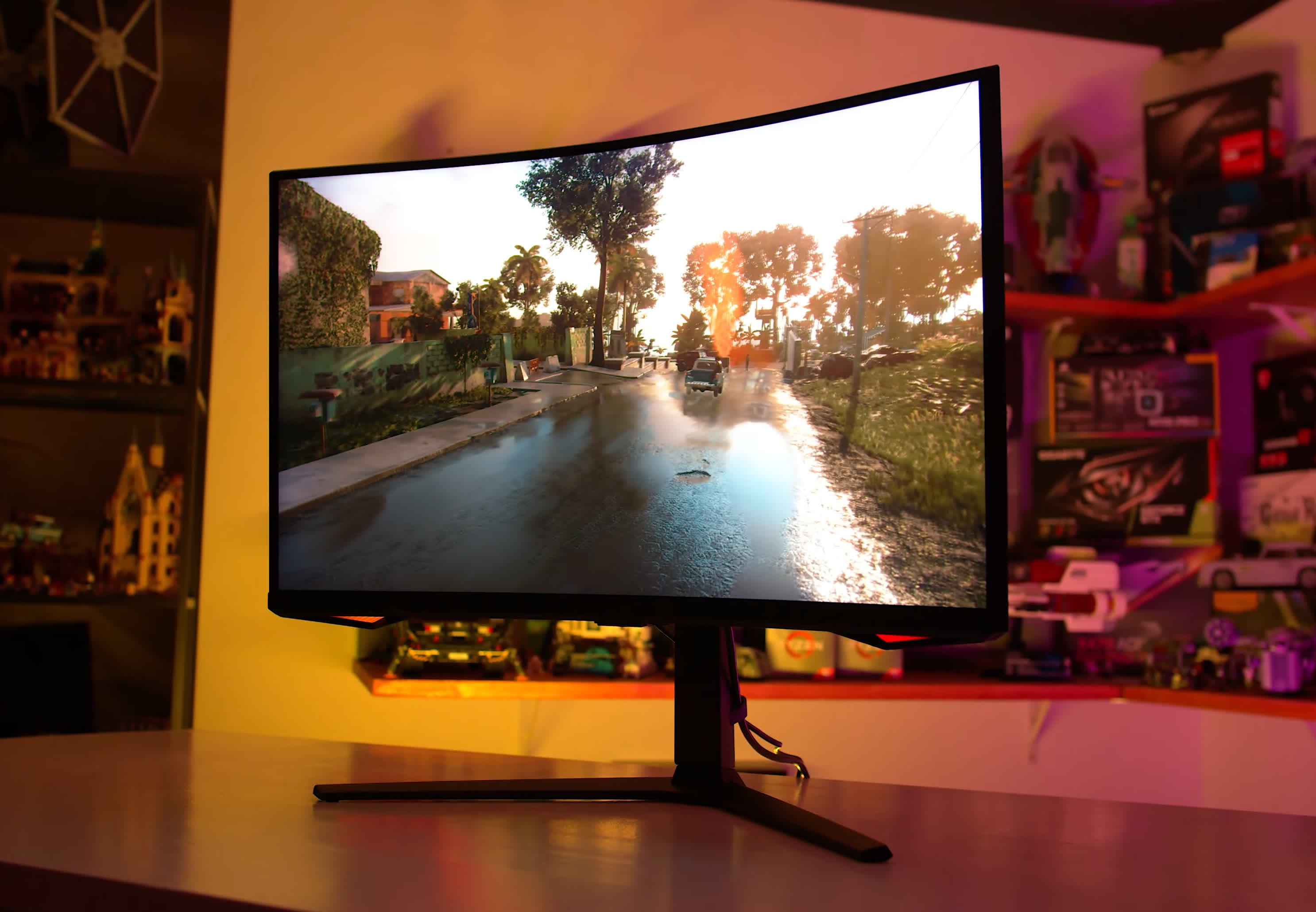
The 42-inch LG C2 is large and a totally different format to the 34-inch ultrawide AW3423DW, if there's any hesitation around ultrawides or large displays, the choice one way or another is pretty obvious. But we think there's a lot of reason to be on the fence here, after all the C2 is actually a bit wider than the "ultrawide" AW3423DW and gives you a lot more height for a greater overall screen area.
Here are the separating factors: the AW3423DW is a higher refresh rate 175Hz display that's better suited to PC use due to its DisplayPort connector, higher sustained brightness and better burn in policy. It has similar HDR performance to the LG C2, and at times can actually get brighter while obviously maintaining similar black levels. It has good factory calibration, great HDR accuracy and decent stand ergonomics.
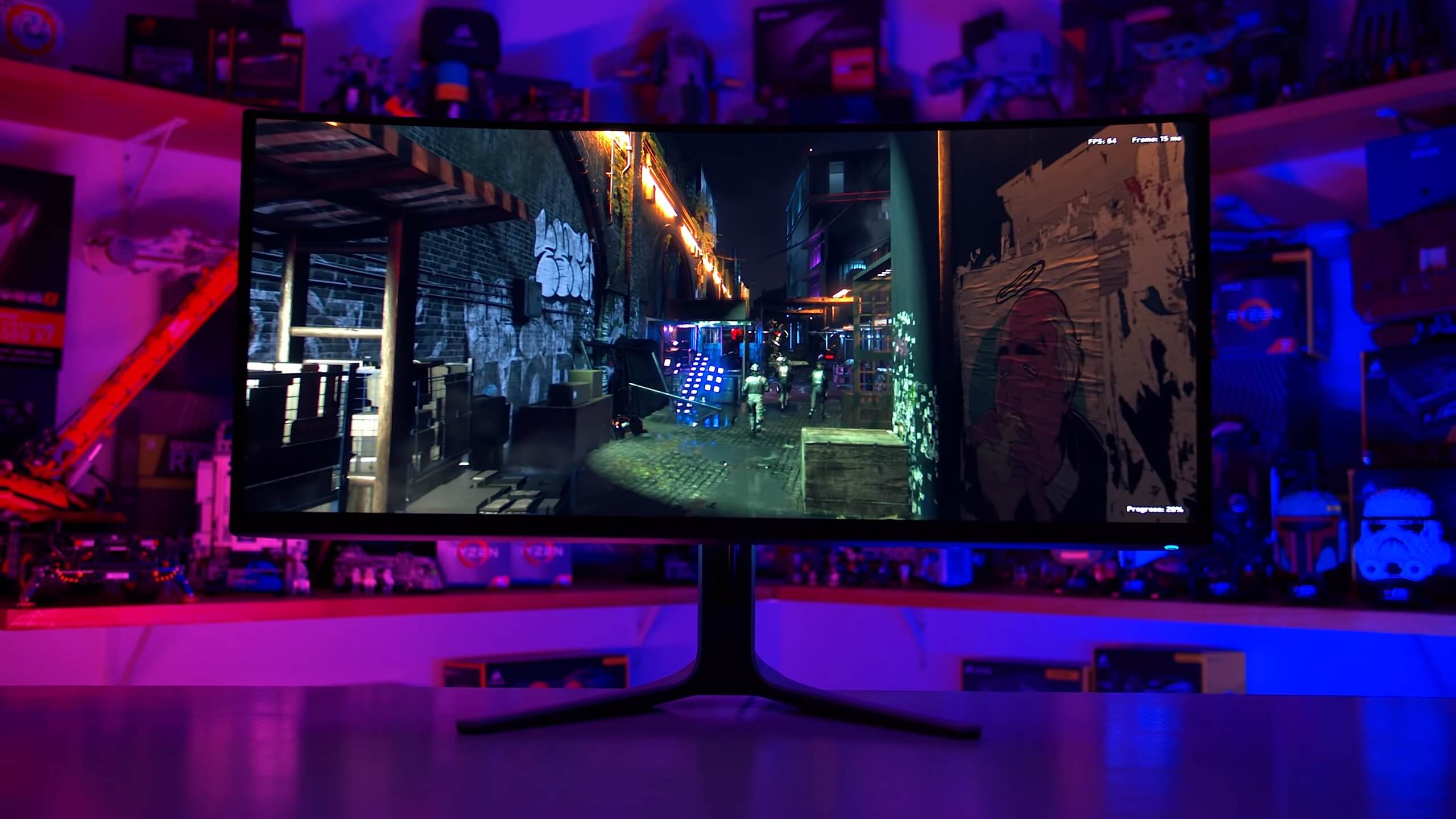
The LG C2 is in the lead with its feature set, it's a full blown TV with smart features and a much wider range of calibration options, including support for Dolby Vision, which the AW3423DW doesn't support. It's larger, has a better display coating, better subpixel layout, and has better console compatibility thanks to HDMI 2.1 support. It's also a lower processing latency display, and LG supports their products very well through software updates, unlike the Alienware which doesn't even have user upgradeable firmware.
When choosing either of these OLEDs, it's hard to make a bad choice, neither are perfect options and there's plenty of room for improvement, but the image quality they provide for gamers today is outstanding. Also important to note, there is a new variant of the AW3423DW called the AW3423DWF which is 165Hz and omits the G-Sync module, for a $200 saving. We expect this to perform similarly to the model we tested, so it should be considered.
Best Ultrawide Monitor
Alienware AW3423DW 34" QD-OLED

The Alienware AW3423DW is clearly the best ultrawide you can get right now. It's priced well for the features it offers and overall is one of the best gaming monitors on the market right now.
The big selling point here is Alienware's use of QD-OLED technology, so we get true HDR performance thanks to OLED's self-lit pixel structure which results in deep zero-level blacks. This QD-OLED panel can hit up to 1000 nits of brightness for small elements, so it looks great displaying HDR content. Combined with extremely fast response times (inherent nature of OLED technology), and fast 175Hz refresh rate, there is no better monitor on the market for HDR gaming right now.
It's also a very capable SDR gaming monitor, it doesn't have some of the drawbacks we've seen from other OLED displays. In particular, full screen brightness of 240 nits is usable in most rooms (though not amazing), and there's no annoying features like automatic brightness limiters enabled when in SDR. Dell also mitigates the burn-in anxiety with a 3 year burn-in warranty.
There are some drawbacks which do restrict the capabilities of the AW3423DW to content consumption though. The triangle-RGB pixel structure is not great for text clarity and can cause fringing on some content, which may be noticeable depending on how sensitive you are to it.
There risk of burn-in remains despite of the warranty, which is exacerbated when using the monitor for static imagery like spreadsheets or other productivity apps. We'd only recommend this monitor if you are primarily going to use it for gaming, or other form of content consumption like watching videos.
Other issues include the display's coating and layer composition, which can reflect a lot of ambient light depending on your room setup. To get the full benefit of this display we recommend using it in a dark room, so the deep blacks of OLED can shine. It's also actively cooled and the fan can be heard while it's running. Despite these negatives though, you won't find a better ultrawide monitor, or better HDR gaming monitor for $1,300.
A Budget Option
Not everyone has $1,300 to spend though, so if HDR isn't what you're after and just want a regular ultrawide that's affordable, we can recommend the Gigabyte M34WQ. It's a bit unusual being a flat 34-inch 3440 x 1440 144Hz IPS display, but what it offers at just $450 is an excellent balance of performance across the various areas we test and look for.
Response times are good, color performance is good, and there are no huge negatives such as dark level smearing that you do get with most budget VA ultrawides.
On the cons side, the contrast ratio is weak in comparison to its VA competitors, and response times aren't as fast as premium IPS gaming ultrawides. But the versatility of this IPS panel and general balance of performance is what swings us towards this product compared to others on the market.
Best Value 1080p Gaming Monitor
AOC 24G2SP 24"

In the 1080p product class, we believe you're either after an entry-level monitor to get started with PC gaming, and we think 1080p is still a suitable choice if you have less than $200 to spend. Or, you're interested in a super high refresh rate option for competitive gaming with features like backlight strobing and fast response times becoming a priority.
Since we last recommended a budget 1080p monitor, we're replacing the older AOC 24G2 with its new version, the 24G2SP. This monitor offers excellent bang for buck at just $160, and is just as good as the 24G2, but with a slightly higher 165Hz refresh rate instead of 144Hz. It retains the 24-inch 1080p IPS panel and other aspects to performance.
The 24G2SP is a solid choice, offering great response time performance in its class, solid color quality, and handy features like a height adjustable stand that you don't always get at this price point. Overall, the AOC is nicely balanced between gaming performance and image quality so we're comfortable to continue to recommend it. As you can imagine for a budget monitor it's not the highest resolution, or the highest refresh rate, or the best performing display, but it's very well balanced for just $160.
Best 1080p Esports Monitor
BenQ Zowie XL2566K

If you want a premium monitor for esports gaming, the go-to choice at the moment appears to be the BenQ XL2566K. We've yet to test this monitor and are hoping to look at it soon, but the basics here are a 24.5-inch 1080p 360Hz TN panel with elite backlight strobing capabilities and super fast response times.
This makes the XL2566K highly suited to competitive gaming where clarity and speed are the top two priorities. We've seen some reviews of this display and we've been super impressed with the UFO test results when the DyAc strobing mode is enabled.
This is a pretty niche product though as BenQ have priced it at a whopping $600, which is expensive for a 1080p monitor and something that only serious competitive gamers should buy.
For everyday more casual gamers, there's a lot more value to be had buying a $600 4K monitor or an elite 1440p display, especially as the TN panel used in the Zowie isn't going to deliver very good color performance or viewing angles. But the XL2566K is there if motion clarity is the number one thing you are interested in, and are satisfied with a 1080p resolution.
